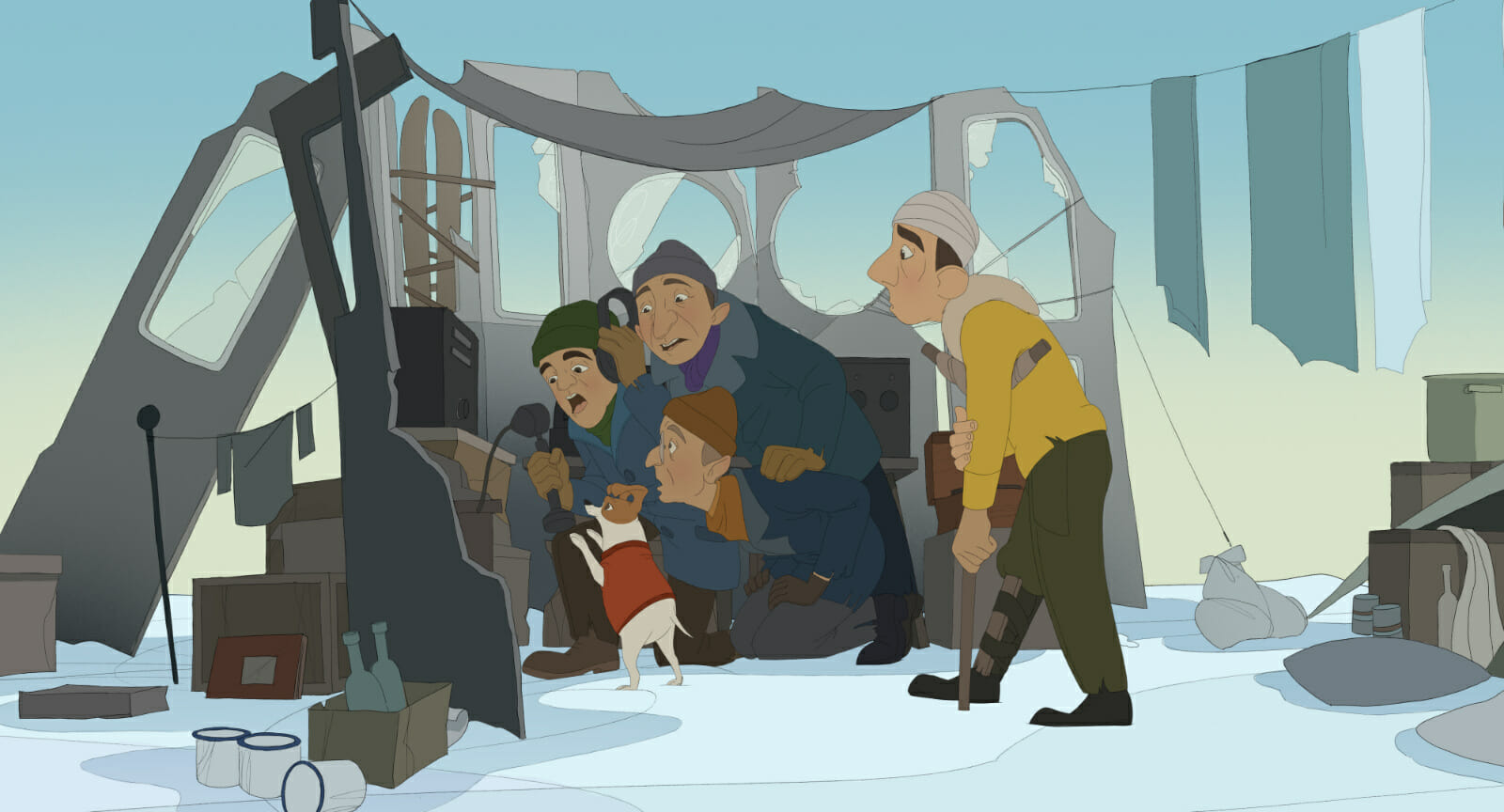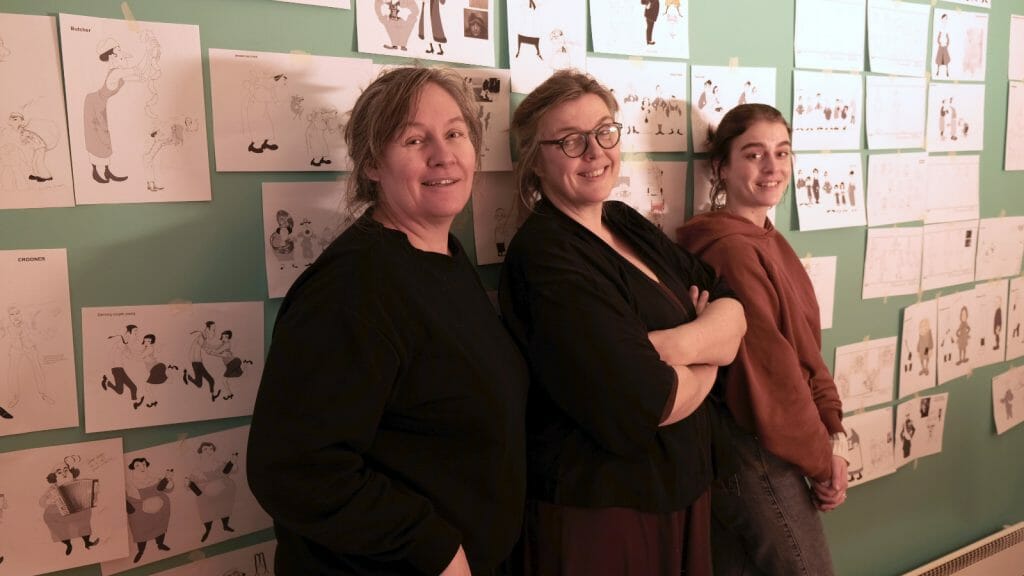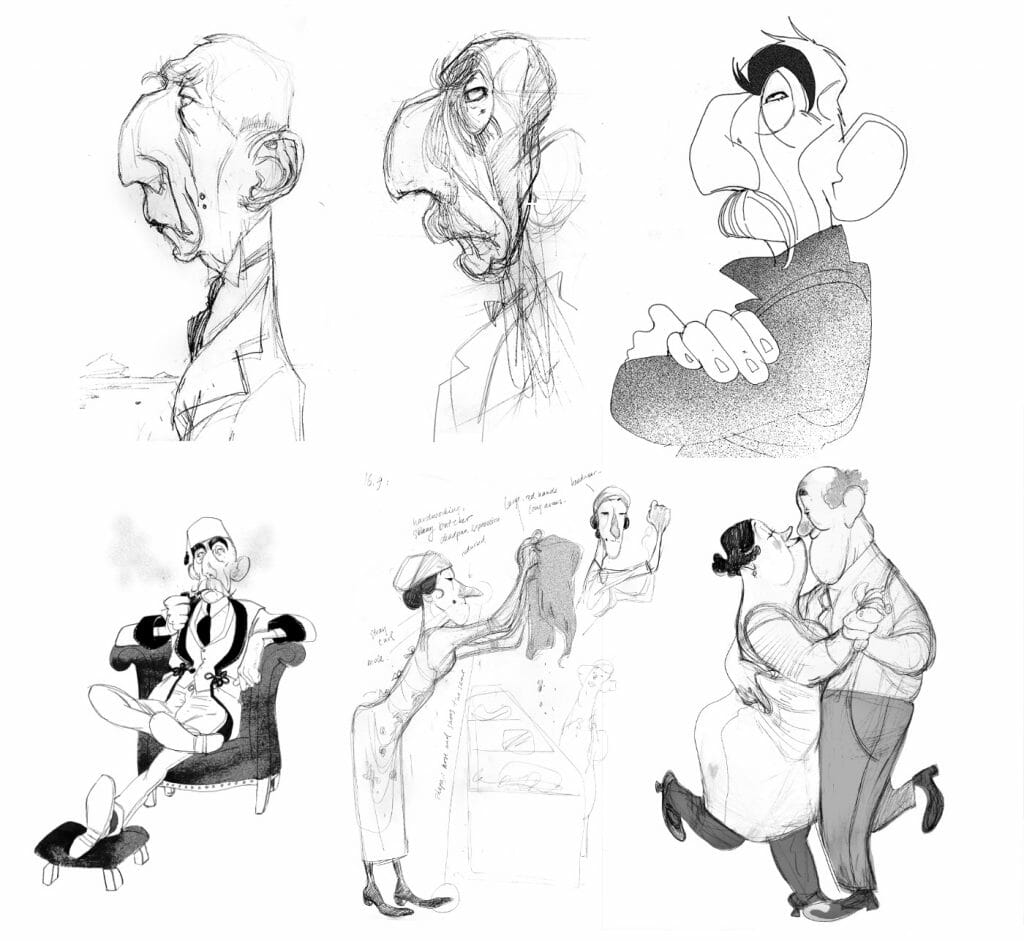
Titina is the award-winning animated feature film that tells a death-defying tale of Arctic exploration from a dog’s-eye view. Based on the thrilling story of polar explorer Roald Amundson and Italian engineer Umberto Nobile, Titina tells their story through the eyes of a small dog who famously accompanied the explorers on their epic journey.
While the legend of the North Pole’s discovery is a well documented story, as well as the power struggle of personality between the famous explorer and engineer, less told is Titina’s story. Seeing the tale unfold through a small dog’s eyes brings a fresh perspective to this Arctic adventure. Bringing this story to life was an epic struggle of its own, overcoming global challenges such as the Covid pandemic in order to realise the vision. Calling on animation talent spanning multiple countries, Titina was created by an international team, under the leadership of Norwegian-Belgian co-producers.
Toon Boom was lucky enough to speak with Tonje Skar Reiersen, a producer behind the production. She offers fascinating insights into how this story was brought to life in such a unique style, including how Toon Boom Harmony’s precise vector lines were used to create an aesthetic that was true to the period Titina is set in. Tonje also introduces us to some of the key members of her team, including some of the incredible department heads who played a pivotal role in managing this extensive production. Read our full interview with Tonje below.
In a brief synopsis, please introduce your film.
Tonje: Titina is a polar epic told from the surprising point of view of a small terrier. It tells the entertaining and exacting (more or less) true story about the discovery of the North Pole with airship in 1926. The expedition was initiated by the world famous and a bit self-absorbed Norwegian polar superhero Roald Amundsen who reached out to the Italian airship engineer Umberto Nobile. Nobile brought along his cute pet dog, Titina.
Telling the tale through Titina’s eyes gave us a lot of freedom. We were never interested in telling a traditional heroic story about hardship and endurance in the ice, but rather an eternal story about human emotions such as ambition, pride and regrets. Seen from Titina’s perspective, Amundsen and Nobile’s quarrel about who lead the expedition and who deserves the honor seem somewhat absurd. Titina is more interested in the simple things in life and takes her time experiencing the wonders of Arctic nature and wildlife. Her gaze gave us room for natural mystique and magical realism that you would normally leave out of a heroic epic.

Can you introduce the key team members who worked on the feature?
Tonje: Titina was made by a crew with a lot of female heads of departments. The director is Norwegian Kajsa Næss, an experienced and acclaimed short filmmaker who made her feature debut with Titina.
The production designer and art director is Emma McCann – a very talented Scottish artist living in France. Emma has worked as background artist and concept designer on films such as The Illusionist, The Red Turtle and The Bear’s Famous Invasion of Sicily, but with Titina she finally had the chance to define a film’s style from A to Z. And she did a wonderful job!
The animation director is Belgian Marie-Laure Guisset. She started off as a 2D animation prodigy on films such as The Secret of Kells and The Triplets of Belleville, and has since been animation supervisor on films and series, both 2D and 3D. Her credits include Zombillénium, The Smurfs and Jack and the Cuckoo-Clock Heart. Marie-Laure is a fantastic animation director with a less-is-more approach to animation and a gift for helping her animators deliver their absolute best.
The lead story artist was a young Norwegian super talent called Dyveke Skøld. Dyveke had worked both in China and France before, but Titina was her first experience as a lead story artist back in Norway. She has a great sense of humor, is a very gifted storyteller with strong compositions and a fun and efficient visual language.
As for the character designer, we worked with the incredibly gifted Norwegian newspaper cartoonist Siri Dokken. Then the film was produced by Lise Fearnley and myself at Mikrofilm (Norway) together with our Belgian partner Viviane Vanfleteren at Vivi Film.

Are there any notable inspirations behind Titina’s charming visual style?
Tonje: Emma McCann is a big fan of art nouveau. For Titina, she especially looked at the Scottish architect and painter Charles Rennie Mackintosh for inspiration. The linework in the film is clearly drawn from his work.
Why was it important to you use a 2D approach on this feature film?
Tonje: Director Kajsa is a big fan of classic 2D animation. She finds it beautiful and very expressive. She wanted a style that reminded us of old-school cell animation, with an aesthetic marked by thin lines, avoiding adding shadows or too much texture. Toon Boom Harmony was perfect for this with its precise vector line. It also suits the time period for the story we tell, which spans from 1926 to 1978. So, this film was intended as a hand drawn 2D from the start, and we stuck to that from beginning to end. The Belgian studios (Souza and Lunanime) and artists did a wonderful job bringing Kajsa’s vision to life.
With an airship engineer protagonist, there are some impressive aerial vehicular scenes, can you share how these were made?
Tonje: It was important to Kajsa to keep the production 2D. We had a 3D model of the airship that was used as reference, but we tried to avoid using it as much as possible. We wanted a flat and hand drawn feel all the way.

What did you find most useful in Storyboard Pro when creating the animatics for Titina?
Tonje: On Titina, we worked on the storyboard for over 12 months and made a lot of changes to the story in this process. Our lead Story artist Dyveke Skøld, says she finds it very handy to go back, tweak or redo her work in Storyboard Pro, compared to working with boards in TVPaint. This made the board process on Titina simpler and more dynamic. The story artists had a great time working on Titina, and that really shows in the final film.
Much of the story is seen from Titina the dog’s eyes. How did you achieve the feeling of seeing the world through the dog’s perspective?
Tonje: There are quite a few scenes that takes place in Titina’s eye height where we are with her down on the floor, witnessing the big men from her perspective. But more importantly, the perspective influenced the story itself. We created scenes and storylines that had nothing to do with the men and their achievements, but where we drift off with Titina and experience her fascination with the landscapes and animals, rather than the celebration of a planted flag.
Can you share a little about the character design process?
Tonje: The first artist who was attached to the project was the Norwegian newspaper cartoonist Siri Dokken. Kajsa loves Siri’s style and line work. Siri is fun and irreverent, but always with a big heart for the little guy. She has very nice volumes and shapes in her drawings and, being a woman, she likes to draw women of all sizes and forms. There is so much personality in Siri’s characters, they don’t need to move that much to be interesting to look at. Again, Toon Boom Harmony was a perfect match for her line work.
However, Siri has never worked with animation before, so it took a lot of work to get her characters ready for animation. Norwegian character designer Sunniva Fluge Hole and Bulgarian Marta Andreeva did a wonderful job translating Siri’s sketches to animation-ready model sheets.
What was the biggest challenge you faced when creating Titina, and how was it overcome?
Tonje: The biggest challenge was the Covid pandemic. Immediately after we completed the pre-production in Norway, the whole world shut down. So, for the entire production time in Belgium – which spun over a year and a half – there were lockdown and travel restrictions. Director Kajsa lived in Brussels during this time and had difficulties travelling home to see her husband and children. So that was a huge sacrifice. It also made it harder for us Norwegian producers to follow the production in Belgium and be by Kajsa’s side. So that was a big loss for us personally. But artistically, the film turned out beautiful, and we couldn’t be happier with the work done by Kajsa and the Belgian studios.
When and where can audiences watch Titina in full?
Tonje: Titina will open theatrically in most European countries during 2023. There are also ongoing negotiations with East Asia. For America, the distribution is not clarified. It has been screened at festivals in the US (Animation Is Film in Los Angeles and New York International Children’s Film Festival), and we are hoping for many more festivals in both the US and Canada. A theatrical distribution would be fantastic, but there are no signed deals at this point. For the rest of the Americas, there will be some festivals and cinematheque screenings, but probably not commercial distribution in theatres. And then we will see what will happen with the streamers.

- Interested in following Titina‘s journey to international screens? You can subscribe to official accounts for the film on Instagram and Facebook.
- Ready to begin your journey in animation? Toon Boom offers instructor-led training on paperless animation, cutout animation and rigging.


